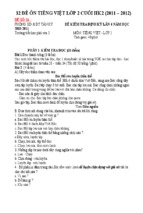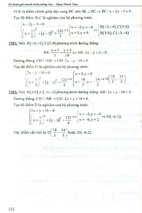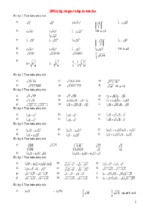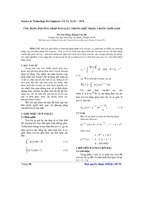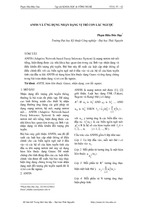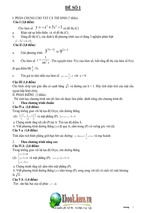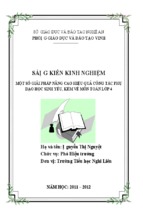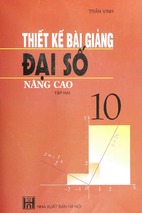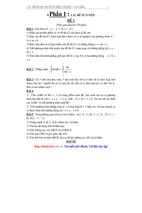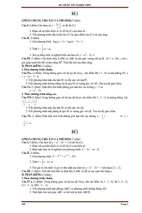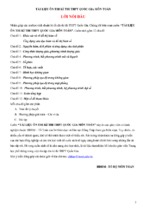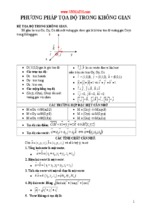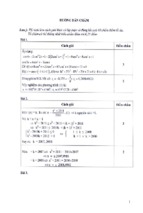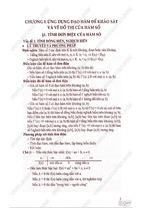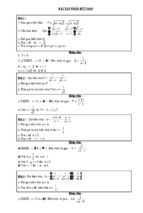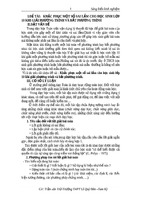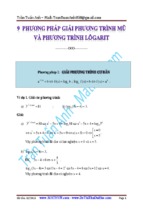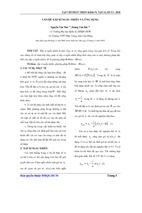Quadratic Residues and Non-Residues:
arXiv:1408.0235v7 [math.NT] 21 Oct 2016
Selected Topics
Steve Wright
Department of Mathematics and Statistics
Oakland University
Rochester, Michigan 48309
U.S.A.
e-mail:
[email protected]
For Linda
i
Contents
Preface
vii
Chapter 1. Introduction: Solving the General Quadratic Congruence Modulo a Prime
1. Linear and Quadratic Congruences
2. The Disquisitiones Arithmeticae
3. Notation, Terminology, and Some Useful Elementary Number Theory
1
1
4
6
Chapter 2. Basic Facts
1. The Legendre Symbol, Euler’s Criterion, and other Important Things
2. The Basic Problem and the Fundamental Problem for a Prime
3. Gauss’ Lemma and the Fundamental Problem for the Prime 2
9
9
13
15
Chapter 3. Gauss’ Theorema Aureum: the Law of Quadratic Reciprocity
1. What is a reciprocity law?
2. The Law of Quadratic Reciprocity
3. Some History
4. Proofs of the Law of Quadratic Reciprocity
5. A Proof of Quadratic Reciprocity via Gauss’ Lemma
6. Another Proof of Quadratic Reciprocity via Gauss’ Lemma
7. A Proof of Quadratic Reciprocity via Gauss Sums: Introduction
8. Algebraic Number Theory
9. Proof of Quadratic Reciprocity via Gauss Sums: Conclusion
10. A Proof of Quadratic Reciprocity via Ideal Theory: Introduction
11. The Structure of Ideals in a Quadratic Number Field
12. Proof of Quadratic Reciprocity via Ideal Theory: Conclusion
13. A Proof of Quadratic Reciprocity via Galois Theory
19
20
23
26
30
31
35
36
37
44
50
50
57
65
Chapter 4. Four Interesting Applications of Quadratic Reciprocity
1. Solution of the Fundamental Problem for Odd Primes
2. Solution of the Basic Problem
3. Sets of Integers which are Quadratic Residues of Infinitely Many Primes
71
72
75
79
iii
4.
5.
6.
7.
8.
9.
Intermezzo: Dirichlet’s Theorem on Primes in Arithmetic Progression
The Asymptotic Density of Primes
The Density of Primes which have a Given Finite Set of Quadratic Residues
Zero-Knowledge Proofs and Quadratic Residues
Jacobi Symbols
An Algorithm for Fast Computation of Legendre Symbols
82
87
88
96
99
102
Chapter 5. The Zeta Function of an Algebraic Number Field and Some Applications 107
1. Dedekind’s Ideal Distribution Theorem
107
2. The Zeta Function of an Algebraic Number Field
116
3. The Zeta Function of a Quadratic Number Field
124
4. Proof of Theorem 4.12 and Related Results
126
5. Proof of the Fundamental Theorem of Ideal Theory
132
Chapter 6. Elementary Proofs
1. Whither Elementary Proofs in Number Theory?
2. An Elementary Proof of Theorem 5.13
3. An Elementary Proof of Theorem 4.12
137
137
138
142
Chapter 7. Dirichlet L-functions and the Distribution of Quadratic Residues
1. Positivity of Sums of Values of a Legendre Symbol
2. Proof of Theorem 7.1: Outline of the Argument
3. Some Useful Facts About Dirichlet L-functions
4. Calculation of a Gauss Sum
5. Some Useful Facts About Analytic Functions of a Complex Variable
6. The Convergence of Fourier Series
7. Proof of Theorems 7.2, 7.3, and 7.4
8. An Elegant Proof of Lemma 4.8 for Real Dirichlet Characters
9. A Proof of Quadratic Reciprocity via Finite Fourier Series
147
147
150
152
154
157
160
166
174
177
Chapter 8. Dirichlet’s Class-Number Formula
1. Some Structure Theory for Dirichlet Characters
2. The Structure of Real Primitive Dirichlet Characters
3. Elements of the Theory of Quadratic Forms
4. Representation of Integers by Quadratic Forms and the Class Number
5. The Class-Number Formula
6. The Class-Number Formula and the Class Number of Quadratic Fields
7. A Character-Theoretic Proof of Quadratic Reciprocity
183
184
184
187
189
192
199
202
iv
Chapter 9. Quadratic Residues and Non-Residues in Arithmetic Progression
1. Long Sets of Consecutive Residues and Non-Residues
2. Long Sets of Residues and Non-Residues in Arithmetic Progression
3. Weil Sums and their Estimation
4. Solution of Problems 1 and 3
5. Solution of Problems 2 and 4: Introduction
6. Preliminary Estimate of qε (p)
7. Calculation of Σ4 (p): Preliminaries
8. The (B, S)-signature of a Prime
9. Calculation of Σ4 (p): Conclusion
10. Solution of Problems 2 and 4: Conclusion
11. An Interesting Class of Examples
12. The Asymptotic Density of Π+ (a, b)
207
208
209
211
217
220
222
225
226
228
231
234
244
Chapter 10. Are quadratic residues randomly distributed?
1. Irregularity of the Distribution of Quadratic Residues
2. Detecting Random Behavior Using the Central Limit Theorem
3. Verifying Random Behavior via a Result of Davenport and Erd¨s
o
247
247
249
251
Bibliography
257
Index
261
v
Preface
Although number theory as a coherent mathematical subject started with the work of
Fermat in the 1630’s, modern number theory, i.e., the systematic and mathematically rigorous development of the subject from fundamental properties of the integers, began in
1801 with the appearance of Gauss’ landmark treatise Disquisitiones Arithmeticae [19]. A
major part of the Disquisitiones deals with quadratic residues and non-residues: if p is an
odd prime, an integer z is a quadratic residue (respectively, a quadratic non-residue) of p if
there is (respectively, is not) an integer x such that x2 ≡ z mod p. As we shall see, quadratic residues arise naturally as soon as one wants to solve the general quadratic congruence
ax2 +bx+c ≡ 0 mod m, a ≡ 0 mod m, and this, in fact, motivated some of the interest which
Gauss himself had in them. Beginning with Gauss’ fundamental contributions, the study of
quadratic residues and non-residues has subsequently led directly to many of the key ideas
and techniques that are used everywhere in number theory today, and the primary goal of
these lecture notes is to use this study as a window through which to view the development
of some of those ideas and techniques. In pursuit of that goal, we will employ methods from
elementary, analytic, and combinatorial number theory, as well as methods from the theory
of algebraic numbers.
In order to follow these lectures most profitably, the reader should have some familiarity
with the basic results of elementary number theory. An excellent source for this material (and
much more) is the text [30] of Kenneth Ireland and Michael Rosen, A Classical Introduction
to Modern Number Theory. A feature of this text that is of particular relevance to what we
discuss is Ireland and Rosen’s treatment of quadratic and higher-power residues, which is
noteworthy for its elegance and completeness, as well as for its historical perspicacity. We
will in fact make use of some of their work in Chapters 3 and 7.
Although not absolutely necessary, some knowledge of algebraic number theory will also
be helpful for reading these notes. We will provide complete proofs of some facts about
algebraic numbers and we will quote other facts without proof. Our reference for proof of
the latter results is the classical treatise of Erich Hecke [27], Vorlesungen uber die Theorie der
¨
Algebraischen Zahlen, in the very readable English translation by G. Brauer and J. Goldman.
About Hecke’s text Andr´ Weil ([58], foreword) had this to say: “To improve upon Hecke,
e
vii
in a treatment along classical lines of the theory of algebraic numbers, would be a futile and
impossible task.” We concur enthusiastically with Weil’s assessment and highly recommend
Hecke’s book to all those who are interested in number theory.
We next offer a brief overview of what is to follow. The notes are arranged in a series
of ten chapters. Chapter 1, an introduction to the subsequent chapters, provides some
motivation for the study of quadratic residues and non-residues by consideration of what
needs to be done when one wishes to solve the general quadratic congruence mentioned
above. We briefly discuss the contents of the Disquisitiones Arithmeticae, present some
biographical information about Gauss, and also record some basic results from elementary
number theory that will be used frequently in the sequel. Chapter 2 provides some useful
facts about quadratic residues and non-residues upon which the rest of the chapters are
based. Here we also describe a procedure which provides a strategy for solving what we
call the Basic Problem: if d is an integer, find all primes p such that d is a quadratic
residue of p. The Law of Quadratic Reciprocity is the subject of Chapter 3. We present
seven proofs of this fundamentally important result (five in Chapter 3, one in Chapter
7, and one in Chapter 8), which focus primarily (but not exclusively) on the ideas used
in the proofs of quadratic reciprocity which Gauss discovered. Chapter 4 discusses some
interesting and important applications of quadratic reciprocity, having to do with the solution
of the Basic Problem from Chapter 2 and with the structure of the finite subsets S of the
positive integers possessing at least one of the following two properties: for infinitely many
primes p, S is a set of quadratic residues of p, or for infinitely many primes p, S is a set of
quadratic non-residues of p. Here the fundamental contributions of Dirichlet to the theory
of quadratic residues enters our story and begins a major theme that will play throughout
the rest of our work. Chapter 4 concludes with an interesting application of quadratic
residues in modern cryptology, to so-called zero-knowledge or minimal-disclosure proofs.
The use of transcendental methods in the theory of quadratic residues, begun in Chapter 4,
continues in Chapter 5 with the study of the zeta function of an algebraic number field and
its application to the solution of some of the problems taken up in Chapter 4. Chapter 6
gives elementary proofs of some of the results in Chapter 5 which obviate the use made there
of the zeta function. The question of how quadratic residues and non-residues of a prime p
are distributed among the integers 1, 2, . . . , p − 1 is considered in Chapter 7, and there we
highlight additional results and methods due to Dirichlet which employ the basic theory of
L-functions attached to Dirichlet characters determined by certain moduli. Because of the
importance that positivity of the values at s = 1 of Dirichlet L-functions plays in the proof of
viii
the results of Chapter 7, we present in Chapter 8 a discussion and proof of Dirichlet’s classnumber formula as a way to defenitively explain why the values at s = 1 of L-functions are
positive. In Chapter 9 the occurrence of quadratic residues and non-residues as arbitrarily
long arithmetic progressions is studied by means of some ideas of Harold Davenport [5] and
some techniques in combinatorial number theory developed in recent work of the author [62],
[63]. A key issue that arises in our approach to this problem is the estimation of certain
character sums over the field of p elements, p a prime, and we address this issue by using some
results of A. Weil [57] and G. I. Perel’muter [44]. Our discussion concludes with Chapter 10,
where the Central Limit Theorem from the theory of probability and a theorem of Davenport
and Paul Erd¨s [6] are used to provide evidence for the contention that as the prime p tends
o
to infinity, quadratic residues of p are distributed randomly throughout certain subintervals
of the set {1, 2, . . . , p − 1}.
These notes are an elaboration of the contents of a special-topics-in-mathematics course
that was offered during the Summer semesters of 2014 and 2015 at Oakland University. I
am very grateful to my colleague Meir Shillor for suggesting that I give such a course, and
for thereby providing me with the impetus to think about what such a course would entail.
I am also very grateful to my colleagues Eddie Cheng and Serge Kruk, the former for giving
me very generous and valuable assistance with numerous LaTeX issues which arose during
the preparation of the manuscript, and the latter for formatting all of the figures in the text.
I thank my students Saad Al Najjar, Amelia McIlvenna and Julian Venegas for reading an
early version of the notes and offering several insightful comments which were very helpful
to me. My sincere and heartfelt appreciation is also tendered to the anonymous referees
for many comments and suggestions which resulted in a very substantial improvement in
both the content and exposition of these notes. Finally, and above all others, I am grateful
beyond words to my dear wife Linda for her unstinting love, support, and encouragement;
this humble missive is dedicated to her.
ix
CHAPTER 1
Introduction: Solving the General Quadratic Congruence Modulo
a Prime
The purpose of this chapter is to define quadratic residues and non-residues and to use
the solution of the general quadratic congruence modulo a prime to indicate one reason why
the study of quadratic residues and non-residues is interesting and important. This is done
in section 1. The primary source for essential information about quadratic residues is the
Disquisitiones Arithmeticae of Carl Friedrich Gauss, one of the most important books about
number theory ever written. Because of its singular prominence for number theory and also
for what we will do in these lecture notes, the contents of the Disquisitiones are discussed
briefly in section 2, and some biographical facts about Gauss are also presented. Notation
and terminology that will be employed throughout the sequel are recorded in section 3, as
well as a few basic facts from elementary number theory that will be used frequently in
subsequent work.
1. Linear and Quadratic Congruences
One of the central problems of number theory, both ancient and modern, is finding
solutions (in the integers) of polynomial equations with integer coefficients in one or more
variables. In order to motivate our study, consider the equation
ax ≡ b mod m,
a linear equation in the unknown integer x. Elementary number theory provides an algorithm
for determining exactly when this equation has a solution, and for finding all such solutions,
which essentially involves nothing more sophisticated than the Euclidean algorithm (see
Proposition 1.4 below and the comments after it).
When we consider what happens for the general quadratic congruence
(1)
ax2 + bx + c ≡ 0 mod m, a ≡ 0 mod m,
things get more complicated. In order to see what the issues are, note first that
1
Chapter 1. Introduction: Solving the General Quadratic Congruence Modulo a Prime
(2ax + b)2 ≡ b2 − 4ac mod 4am
iff 4a2 x2 + 4abx + 4ac ≡ 0 mod 4am
iff 4a(ax2 + bx + c) ≡ 0 mod 4am
iff ax2 + bx + c ≡ 0 mod m.
Hence (1) has a solution if and only if
(2)
2ax ≡ s − b mod 4am,
where s is a solution of
(3)
s2 ≡ b2 − 4ac mod 4am.
Now (2) has a solution if and only if s − b is divisible by 2a, the greatest common divisor of
2a and 4am, and so it follows that (1) has a solution if and only if (3) has a solution s such
that s − b is divisible by 2a. We have hence reduced the solution of (1) to finding solutions
s of (3) which satisfy an appropriate divisibility condition.
Our attention is therefore focused on the following problem: if n and z are integers with
n ≥ 2, find all solutions x of the congruence
(4)
x2 ≡ z mod n.
Let
k
pαi
i
n=
i=1
be the prime factorization of n, and let Σi denote the set of all solutions of the congruence
x2 ≡ z mod pαi , i = 1, . . . , k.
i
Let s = (s1 , . . . , sk ) ∈ Σ1 × · · · × Σk , and let σ(s) denote the simultaneous solution, unique
mod n, of the system of congruences
x ≡ si mod pαi , i = 1, . . . , k,
i
obtained via the Chinese remainder theorem (Theorem 1.3 below). It is then not difficult to
show that the set of all solutions of (4) is given precisely by the set
{σ(s) : s ∈ Σ1 × · · · × Σk }.
Consequently (4), and hence also (1), can be solved if we can solve the congruence
(5)
x2 ≡ z mod pα ,
2
1. Linear and Quadratic Congruences
where p is a fixed prime and α is a fixed positive integer.
In articles 103 and 104 of Disquisitiones Arithmeticae [19], Gauss gave a series of beautiful
formulae which completely solve (5) for all primes p and exponents α. In order to describe
them, let σ ∈ {0, 1, . . . , pα − 1} denote a solution of (5).
I. Suppose first that z is not divisible by p. If p = 2 and α = 1 then σ = 1. If p is odd or
p = 2 = α then σ has exactly two values ±σ0 . If p = 2 and α > 2 then σ has exactly four
values ±σ0 and ±σ0 + 2α−1 .
II. Suppose next that z is divisible by p but not by pα . If (5) has a solution it can be
shown that the multiplicity of p as a factor of z must be even, say 2µ, and so let z = z1 p2µ .
Then σ is given by the formula
σ ′ pµ + ipα−µ , i ∈ {0, 1, . . . , pµ − 1},
where σ ′ varies over all solutions, determined according to I, of the congruence
x2 ≡ z1 mod pα−2µ .
III. Finally if z is divisible by pα , and if we set α = 2k or α = 2k − 1, depending on
whether α is even or odd, then σ is given by the formula
ipk , i ∈ {0, . . . , pα−k − 1}.
We will focus on the most important special case of (5), namely when p is odd and α = 1,
i.e., the congruence
(6)
x2 ≡ z mod p
(note that when p is odd, the solutions of (5) in cases I and II are determined by the solutions
of (6) for certain values of z). The first thing to do here is to observe that the ring determined
by the congruence classes of integers mod p is a field, and so (6) has at most two solutions.
We have that x ≡ 0 mod p is the unique solution of (6) if and only if z is divisible by p, and
if s0 ≡ 0 mod p is a solution of (6) then so is −s0 , and s0 ≡ −s0 mod p because p is an odd
prime. These facts are motivation for the following definition:
Definition. If p is an odd prime and z is an integer not divisible by p, then z is a quadratic
residue ( respectively, quadratic non-residue) of p if there is (respectively, is not) an integer
x such that x2 ≡ z mod p.
As a consequence of our previous discussion and Gauss’ solution of (5), solutions of (1)
will exist only if (among other things) for each (odd) prime factor p of 4am, the discriminant
3
Chapter 1. Introduction: Solving the General Quadratic Congruence Modulo a Prime
b2 − 4ac of ax2 + bx + c is either divisible by p or is a quadratic residue of p. This remark
becomes even more emphatic if the modulus m in (1) is a single odd prime p. In that case,
(2ax + b)2 ≡ b2 − 4ac mod p iff ax2 + bx + c ≡ 0 mod p,
from whence the next proposition follows immediately:
Proposition 1.1. Let p be an odd prime.The congruence
(7)
ax2 + bx + c ≡ 0 mod p, a ≡ 0 mod p,
has a solution if and only if
x2 ≡ b2 − 4ac mod p
(8)
has a solution, i.e., if and only if either b2 − 4ac is divisible by p or b2 − 4ac is a quadratic
residue of p. Moreover, if (2a)−1 is the multiplicative inverse of 2a mod p (which exists
because p does not divide 2a; see Proposition 1.2 below) then the solutions of (7) are given
precisely by the formula
x ≡ (±s − b)(2a)−1 mod p,
where ±s are the solutions of (8).
We take it as self-evident that the solution of the general quadratic congruence (1) is one of
the most fundamental and most important problems in the theory of Diophantine equations
in two variables. By virtue of Proposition 1.1 and the discussion which precedes it, quadratic
residues and non-residues play a pivotal role in the determination of the solutions of (1).
We hope that the reader will now agree: the study of quadratic residues and non-residues is
important and interesting!
2. The Disquisitiones Arithmeticae
As we pointed out in the preface, modern number theory, that is, the systematic and
mathematically rigorous development of the subject from fundamental properties of the
integers, began in 1801 with the publication of Gauss’ great treatise, the Disquisitiones
Arithmeticae. Because of its first appearance here in our story, and especially because it
plays a dominant role in that story, we will now briefly discuss some of the most important
aspects of the Disquisitiones. The book consists of seven sections divided into 366 articles.
The first three sections are concerned with establishing basic results in number theory such as
the Fundamental Theorem of Arithmetic (proved rigorously here for the first time), Fermat’s
little theorem, primitive roots and indices, the Chinese remainder theorem, and Wilson’s
theorem. Perhaps the most important innovation in the Disquisitiones is Gauss’ introduction
4
2. The Disquisitiones Arithmeticae
in Section I, and its systematic use throughout the rest of the book, of the concept of
modular congruence. Gauss shows how modular congruence can be used to give the study
of divisibility of the integers a comprehensive and systematic algebraic formulation, thereby
greatly increasing the power and diversity of the techniques in number theory that were in
use up to that time. Certainly one of the most striking examples of the power of modular
congruence is the use that Gauss made of it in Section IV in his investigation of quadratic
residues, which culminates in the first complete and correct proof of the Law of Quadratic
Reciprocity, the most important result of that subject. We will have much more to say about
quadratic reciprocity in Chapter 3.
By far the longest part of the Disquisitiones, over half of the entire volume, is taken up
by Section V, which contains Gauss’ deep and penetrating analysis of quadratic forms. If
(a, b, c) ∈ Z × Z × Z, the function defined on Z × Z by
(x, y) → ax2 + bxy + cy 2
is called a (binary) quadratic form. We frequently repress the functional dependence on (x, y)
and hence also refer to the polynomial ax2 +bxy+cy 2 as a quadratic form. In Section V, Gauss
first develops a way to systematically classify quadratic forms according to their numbertheoretic properties and then investigates in great depth the algebraic and number theoretic
structure of quadratic forms using the properties of this classification. Next, he defines an
operation, which he called the composition of forms, on the set of forms ax2 +bxy +cy 2 whose
discriminate b2 −4ac is a fixed value. The set of all quadratic forms whose discriminants have
a fixed value supports a basic equivalence relation which partitions this set of forms into a
finite number of equivalence classes (section 12, Chapter 3), and composition of forms turns
this set of equivalence classes into what we would today call a group. Of course Gauss did not
call it that, as the group concept was not formulated until much later; however, he did make
essential use of the group structure which the composition of forms possesses. Gauss then
proceeds to use composition of forms together with the methods that he developed previously
to establish additional results concerning the algebraic and number-theoretic structure of
forms. We will see in section 12 of Chapter 3 how some of the elements of Gauss’ theory
of quadratic forms arises in our study of quadratic reciprocity, and we will also make use of
some of the basic theory of quadratic forms in Chapter 8.
Section VI of the Disquisitiones is concerned with applications of primitive roots, quadratic residues, and quadratic forms to the structure of rational numbers, the solution of
modular square-root problems, and primality testing and prime factorization of the integers.
Finally, in Section VII, Gauss presents his theory of cyclotomy, the study of divisions of the
5
Chapter 1. Introduction: Solving the General Quadratic Congruence Modulo a Prime
circle into congruent arcs, which culminates in his famous theorem on the determination of
the regular n-gons which can be constructed using only a straightedge and compass.
It is appropriate at this juncture to say a few words about Gauss himself. Carl Friedrich
Gauss was born in 1777 in Brunswick, a city in the north of present-day Germany, lived for
most of his life in G¨ttingen, and died there in 1855. Gauss’ exceptional mathematical talent
o
was clear from a very early age. Because he was such a gifted and promising young student,
Gauss was introduced in 1791 to the Duke of Brunswick, who became a prominant patron
and supporter of Gauss for many years (see, in particular, the dedication in the Disquisitiones which Gauss addressed to the Duke). In 1795, Gauss matriculated at the University
of G¨ttingen, left in 1798 without obtaining a degree, and was granted a doctoral degree
o
from the University of Helmstedt in 1799. After his celebrated computation of the orbit of
the asteroid Ceres in 1801 Gauss was appointed director of the newly opened observatory at
the University of G¨ttingen in 1807, which position he held for the rest of his life. In addition
o
to his ground-breaking work in number theory, Gauss made contributions of fundamental
importance to geometry (differential geometry and non-Euclidean geometry), analysis (elliptic functions, elliptic integrals, and the theory of infinite series), physics (potential theory
and geomagnetism), geodesy and astronomy (celestial mechanics and the computation of the
orbits of celestial bodies), and statistics and probability (the method of least squares and
the normal distribution).
3. Notation, Terminology, and Some Useful Elementary Number Theory
We now fix some notation and terminology that will be used repeatedly throughout the
sequel. The letter p will always denote a generic odd prime, the letter q, unless otherwise
specified, will denote a generic prime (either even or odd), P is the set of all primes, Z is
the set of all integers, Q is the set of all rationals, and R is the set of all real numbers. If
m, n ∈ Z with m ≤ n then [m, n] is the set of all integers at least m and no more than n,
listed in increasing order, [m, ∞) is the set of all integers exceeding m − 1, also listed in
increasing order, and gcd(m, n) is the greatest common divisor of m and n. If n ∈ [2, ∞)
then U(n) will denote the set {m ∈ [1, n − 1] : gcd(m, n) = 1}. If z is an integer then π(z)
will denote the set of all prime factors of z. If A is a set then |A| will denote the cardinality
of A, 2A is the set of all subsets of A, and ∅ denotes the empty set. Finally, we will refer
to a quadratic residue or quadratic non-residue as simply a residue or non-residue; all other
residues of a modulus m ∈ [2, ∞) will always be called ordinary residues. In particular, the
minimal non-negative ordinary residues modulo m are the elements of the set [0, m − 1].
6
3. Notation, Terminology, and Some Useful Elementary Number Theory
We also recall some facts from elementary number theory that will be useful in what
follows. For more information about them consult any standard text on elementary number
theory, e.g., Ireland and Rosen [30] or K. Rosen [48].
If m is a positive integer and a ∈ Z, recall that an inverse of a modulo m is an integer α
such that aα ≡ 1 mod m.
Proposition 1.2. If m is a positive integer and a ∈ Z then a has an inverse modulo m
if and only if gcd(a, m) = 1. Moreover, the inverse is relatively prime to m and is unique
modulo m.
Theorem 1.3. (Chinese remainder theorem). If m1 , . . . , mr are pairwise relatively prime
positive integers and (a1 , . . . , ar ) is an r-tuple of integers then the system of congruences
x ≡ ai mod mi , i = 1, . . . , r,
has a simultaneous solution that is unique modulo
Mk =
r
i=1 mi .
Moreover, if
mi ,
i=k
and if yk is the inverse of Mk mod mk (which exits because gcd(mk , Mk ) = 1) then the
solution is given by
r
r
x≡
ak Mk yk mod
mi .
i=1
k=1
Recall that a linear Diophantine equation is an equation of the form
ax + by = c,
where a, b, and c are given integers and x and y are integer-valued unknowns.
Proposition 1.4. Let a, b, and c be integers and let gcd(a, b) = d. The Diophantine
equation ax + by = c has a solution if and only if d divides c. If d divides c then there are
infinitely many solutions (x, y), and if (x0 , y0 ) is a particular solution then all solutions are
given by
x = x0 + (b/d)n, y = y0 − (a/d)n, n ∈ Z.
Given the Diophantine equation ax + by = c with c divisible by d = gcd(a, b), the
Euclidean algorithm can be used to easily find a particular solution (x0 , y0). Simply let
k = c/d and use the Euclidean algorithm to find integers m and n such that d = am + bn;
then (x0 , y0) = (km, kn) is a particular solution, and all solutions can then be found by using
Proposition 1.4. The simple first-degree congruence ax ≡ b mod m can thus be easily solved
7
Chapter 1. Introduction: Solving the General Quadratic Congruence Modulo a Prime
upon the observation that this congruence has a solution x if and only if the Diophantine
equation ax + my = b has the solution (x, y) for some y ∈ Z.
8


